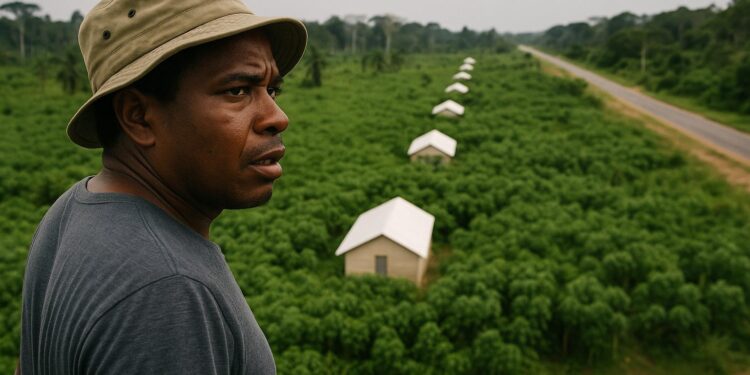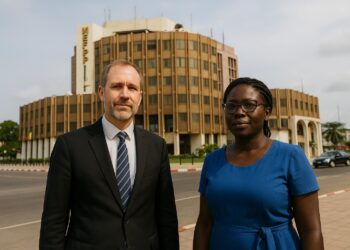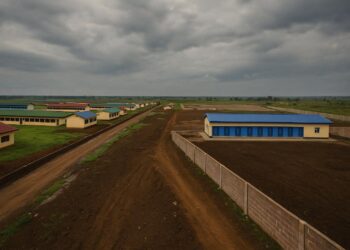Cassava Surge in Likouala’s Protected Zones
Likouala’s forest-savanna mosaic traditionally challenged farmers, yet cassava plants now stretch for kilometres across the new Protected Agricultural Zones, or ZAPs. Local cooperatives, backed by Agriculture Minister Paul Valentin Ngobo, are entering the peak production stage that should deliver the department’s largest root harvest on record.
Policy Backing and Land Tenure Incentives
President Denis Sassou Nguesso repeatedly states that a nation unable to feed itself lacks true sovereignty. That message, echoed during provincial tours, catalysed Likouala producers to request land concessions under the ZAP rubric, which grants long-term leases, technical coaching and tax exemptions in exchange for measurable output targets.
According to Ministry of Agriculture figures, Likouala hosts eight operational ZAPs covering roughly 7,500 hectares; cassava claims close to half. Average yields are trending toward 18 tonnes per hectare, compared with the national baseline of 12 tonnes, suggesting that organised production can close Congo’s food-import gap.
Field Evidence from Botanga to Ganganya
In Botanga and Ganganya, both near Impfondo, cooperative leaders say an initial 50-hectare plot has reached 80 hectares after community members volunteered their weekends. Uniform line planting keeps weeds manageable and eases harvesting, while varietal selection prioritises disease resistance recommended by IITA agronomists consulted by the ministry.
Farmers interviewed describe a shift from subsistence to semi-commercial mindsets. “Last season we stored tubers in earthen pits; this year we are planning starch chips for wholesalers in Brazzaville,” one producer notes. Cooperative records indicate labour productivity at 1.6 hectares per worker, triple the 2021 baseline.
Skills Upgrade and Social Dividends
Beyond yields, ZAPs double as training hubs. In Ibinga and Bissambi, extension officers hold fortnightly clinics on group governance, basic bookkeeping and plant-health monitoring. Participants report smoother credit discussions with the local branch of Crédit Agricole du Congo after adopting formal meeting minutes and transparent cash ledgers.
Social inclusion is another dividend. Autochthonous residents, historically marginalised by itinerant trade networks, occupy one-third of cooperative seats. After selling surplus maize last month, several households purchased radios and sewing machines, tangible symbols of rural disposable income that reinforce policy narratives around inclusive growth.
Logistics Game-Changer: Corridor 13
Yet geography still dictates margins. The Likouala River remains the primary artery, but low-lying stretches slow barges during the dry season. The planned 172-kilometre Corridor 13 road, linking Impfondo to Ouesso and Cameroonian markets, promises year-round truck access and a 40 percent cut in freight costs.
The Public Works ministry says feasibility studies finish in July, while financing discussions with Afreximbank and the Central African Development Bank advance. Investors eyeing agri-processing plants welcome the logistics upgrade; one regional trader estimates cassava flour export parity could move from minus 35 dollars to plus 10 per tonne.
Demand, Prices and Market Dynamics
Domestic demand, however, remains the anchor. Congo’s annual consumption of gari, fufu and industrial starch exceeds 1.4 million tonnes, with urban centres importing processed derivatives from Nigeria. Likouala’s bumper crop could substitute up to 8 percent of imports if drying and milling capacity scales on schedule.
Pricing signals are favourable. Wholesale cassava root in Brazzaville fetched 95 CFA francs per kilogram in May, 12 percent above last year. Analysts at Société Générale’s regional desk attribute the rise to poultry feed substitution away from costly maize, suggesting a structural floor for farm-gate prices.
Financing Pathways and Risk Landscape
For portfolio managers, ZAPs offer an early-stage aggregation mechanism. Equity in cooperatives is still informal, yet local microfinance institutions increasingly accept inventory as collateral. That opens a path for blended-finance structures combining concessional debt with mezzanine tranches, a template echoing Kenya’s warehouse-receipt system introduced a decade ago.
Risk, nonetheless, remains. African Cassava Mosaic Virus flared in neighbouring Équateur Province last quarter, and Likouala’s porous border necessitates vigilant phytosanitary patrols. The agriculture ministry has pre-positioned clean planting material, while cooperatives maintain isolation plots, but investors will watch disease surveillance budgets closely.
Sustainability and Climate Credentials
Environmentalists view ZAPs through a carbon lens. Because concessions occupy fallow savanna rather than primary forest, land-use change emissions are minimal. The ministry is negotiating with the Central African Forest Initiative to certify low-carbon cassava under emerging voluntary markets, which could yield bonus revenue streams.
Water stewardship also enters the equation. Rain-fed agriculture dominates, reducing irrigation demand, yet post-harvest processing will require clean water for fermentation and washing. A feasibility study financed by the French Development Agency proposes modular treatment units powered by rooftop solar to keep effluent within WHO parameters.
Digital Linkages and Forward Outlook
Stakeholders now focus on market linkage. The agriculture ministry plans a digital dashboard to display real-time tonnage, prices and transport availability, modelled on Ghana’s Esoko platform. Cooperatives hope transparency will curb middle-man speculation and align supply with urban demand surges linked to festive calendars.
Should planned roads and data tools converge, Likouala could evolve from frontier district to vital node in Congo’s food system. Early investors willing to navigate logistics and plant-health risks stand to ride a trajectory of rising yields, growing consumer demand and reinforcing government support.












































